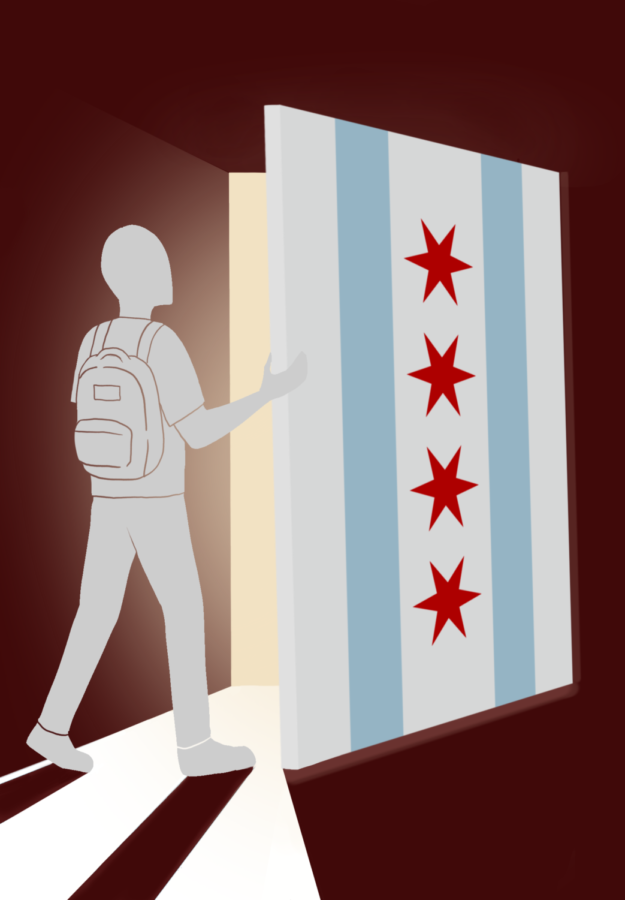Two years ago, I wrote about why study abroad should be accessible to more students at UChicago. This past fall, I was fortunate enough to enroll in the European Civilizations Program in Paris. Needless to say, I ate a lot of pain au chocolats, dusted off my French, and thoroughly reveled in Parisian culture. However, at the very tail end of my program, the COVID-19 Omicron variant became a threat and soon after quickly spread across the world. I had the chance to benefit from studying abroad in my final year of college, but it still bothers me that students may have a more difficult time accessing programs like mine in the future, given the state of the world and the demands of academics in general. Although there is obviously huge appeal to living in a completely new place for a quarter, one of the best parts about the study abroad experience could be implemented at home in Hyde Park: immersion into the surrounding environment.
Many classes, particularly in the social sciences, situate their material within the context of Chicago, but these courses rarely interact directly with the city. Depending on the study abroad program, there are excursions within and outside of the city up to once a week. These trips relate the content from class to real places, exhibits, and artistic works. In France, the excursions ranged from touring the Palace of Versailles to a day trip to World War I battlefields in Verdun. This does not just apply to the history courses; even the neuroscience program related psychological and anatomical phenomena to museum exhibits in Paris. In Chicago, the classes I’ve taken which have involved excursions to museums and locales around the city have been the most memorable. For instance, in the first quarter of my Sosc sequence, Self, Culture, and Society, we visited the National Museum of Mexican Art when discussing Jose Vasconcelos’s “Mestizaje” and Hegel’s Philosophy of World History. In another class about the history of theater, we went to see Lin-Manuel Miranda’s Hamilton to discuss the staging and features of the performance. Taking education out of the confines of the classroom and making use of the rich culture and history in Chicago enhances the student learning experience.
The logistics of building excursions into a rigorous curriculum may seem daunting, but there is already a framework for it in UChicago classes. Academic rigor and the devotion of resources to excursions can go hand in hand. Experiential learning will create more well-rounded students than theoretical readings and PowerPoint slides can alone. In fact, UChicago already acknowledges the benefits of experiential learning and has addressed ways to make it doable, even during the pandemic. With Zoom burnout, students and faculty crave in-person learning even more than before. Part of this transition back to in-person classes could include rethinking the physical places in which learning takes place. Students could also take greater advantage of the programs that exist to encourage Chicago-centric learning, such as the Chicago Studies department. There is much to gain from exploring the environment around us in all fields.
Furthermore, a mindset that seeks to center the University’s place in its surrounding area has the potential to improve UChicago’s relationship with the South Side and shed further light on the complicated history of our school. Building excursions into the curriculum will allow students to actually interact with the area and help to break damaging patterns which further divide the campus from the surrounding community. Education related to the South Side and to the broader city of Chicago provides context and designates significance to the physical place where we spend our college years. Perhaps the solution to concerns about the UChicago bubble is to make sure students engage with the surrounding place itself, and not exclusively in social science fields.
While there are huge benefits to studying in another country and culture, we cannot forget the equally huge opportunity for enrichment and engagement that the city of Chicago presents right here at home. By integrating excursions into the UChicago curriculum, we can further enhance the educational experience of students. Before traveling across the world to enrich our education through experiential learning, students must embrace the same opportunities right here in Chicago.
Sylvia Ebenbach is a fourth-year in the College.









